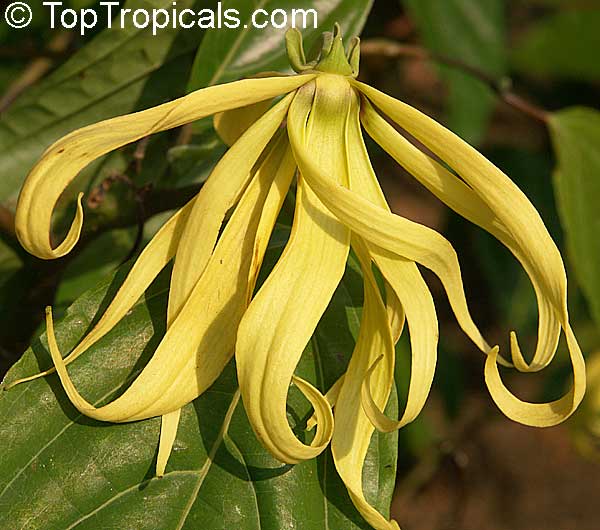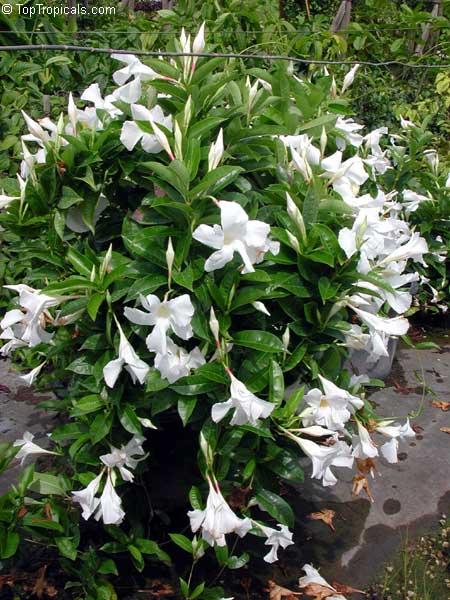Zone-pushing - Growing tropicals in non-tropical climate
You came to the US from India... And you want to have those tropical plants reminding you of your home country... Or you are just a plant collector who wants to have these beauties but unable to relocate to a warmer climate... Is there any way to make your dreams come true?
For rare plants, the general rule is the same as for any rare stuff. If you collect rare paintings, then you have to provide a proper microclimate, if you collect rare cars, then you have to buy polishing not in Pepboys, but in other places where is costs much more. Rare tropical plants also require some extra care if grown out of their natural habitat. But it is possible to make them happy in many non-tropical areas if the conditions are right!
Potting culture is one solution. Important factor is whether the particular plant can be grown in a pot. For potting culture, we will write a special article. Below are some important tips about growing temperature-tender plants in the ground in Florida, California and other areas with a mild winter.

Fertilization (especially with Nitrogen) encourages rapid tender growth that will be killed by cold and this will stress the whole plant.
- First of all, you don't want to try growing it in ground in Michigan.
No way. One customer from Minnesota sent us a claim in spring complaining
that her Orchid tree (Bauhinia)
didn't recover after winter in spite of that she mulched it really well for winter! She wanted a replacement. No need to explain: tropical plants won't grow in zone 8 and colder...
- Very common question: can I grow this plant in my area? (of California,
Florida - warm states). The answer is - depending on particular micro-climate.
Some tropical plants survive in North Florida, others can't make it in Miami. Sometimes it's same species!
- Factors affecting tropical plant survival:
- a) Number ONE: duration of cold period. Compare it with yourself
jumping naked in a snow hill for a second. Shocking but no big
deal. Then imagine yourself sitting on a cold rock for the whole
day in wind-chill. You catch pneumonia and may die. Tropical plants
can't stand long periods of cold. Few days (or just nights) of
cold (about 30-35F) in a row may kill a tropical plant. Few hours
of frost may cause just a leaf drop but the plant will recover.
- b) Minimum temperature - this comes second. Of course, the warmer
the better. But see a) - if it's not long, it's OK.
- c) Exposure. Southern slopes get warm during daytime and stay
warm longer.
- d) Wind-chill can be more dangerous than low temperature
- e) Protection with a house, fence, other larger trees - where
a "pocket" of warm air forms and stays - is beneficial.
- f) Humidity. A lake or river nearby (especially ocean) will
mild the micro-climate.
- g) Particular plant hardiness - some individual plants get adjusted:
they manage to get established before cold catch them. Well-established
plant with developed deep root system has more chances to survive
cold. Do your best to help the plant to get maximum established
during warm season (fertilizing, micro-elements spray, growth
hormone). Large specimens, even ultra-tropical, may survive cooler
winter than they normally have in their natural habitat. The Nature
provided plants with wider hardiness range than it is normally
used.
- h) Healthy plant can withstand lower temperature, so proper
nutrition is important
- i) Gradual temperature drop is less dangerous since it gives
a plant a chance to adjust.
- one sudden freeze by Christmas with prior warm fall is dangerous
- when it starts get cold early in fall, plants stop growing process (below 65F tropical plants stop any growth process), so the new tender growth won't get hurt later in winter, the plants were "expecting" the stress.
- j) Do not fertilize plant during cool months. Not only because
they don't need much food when it's not a growing season, but
also because fertilization (especially with Nitrogen) encourages
rapid tender growth that will be killed by cold and this will
stress the whole plant.
- a) Number ONE: duration of cold period. Compare it with yourself
jumping naked in a snow hill for a second. Shocking but no big
deal. Then imagine yourself sitting on a cold rock for the whole
day in wind-chill. You catch pneumonia and may die. Tropical plants
can't stand long periods of cold. Few days (or just nights) of
cold (about 30-35F) in a row may kill a tropical plant. Few hours
of frost may cause just a leaf drop but the plant will recover.
- What to do then? It's cold like hell in winter here!
You don't have to have a fancy greenhouse all year round. Specifically for Central Florida (zone 9): - Remember that here in South Florida we also have cool winter
nights, although fewer than in Orlando area. So we also have to
protect tender plants from cold. The difference is - we keep them
warm for 2 weeks, and in Central Florida you should probably do
the same for a months or so. We both have to carry the
pots back and forth anyway! - Static protection: during especially cold nights, leave your sprinklers running (good thing you're using a canal water rather than city water, electric bill for your pump is less than a water bill!). Underground water stays about 60-65F and will warm up the air around.
- Dynamic protection: yep, pick up a pot and move it inside. For a night or for the whole week. Your house will need extra mopping, but c'est la vie. One our customer in NY moves his tropical plant collection in his bedroom for winter and sleeps himself on a couch in living room. Will you do the same for your lovely pet Cat if needed?
- Covering with plastic will help. Make sure remove at in the morning sun so plants won't get cooked! White sheet is better than a plastic.
- Temperature pushing: yes, you can place a heater under a tree overnight! (We did it with our young Jackfruit tree until it got established and now survives colder winters!). If it's a smaller plant, cover with plastic (with rod(s) inside, don't let cold plastic touch the plant!) or white sheet. You may place a candle inside overnight (please no fire!).
- Greenhouse doesn't have to be expensive. A simply-assembled mobile carport from Home Depot covered with plastic or white fabric will cost you $100-200. You can fit a hundred plants or more! It's worth a headache for a month so you can show off with your exotics during the rest of the year.
- Don't give up even in Minnesota. Southern exposure windowsill
will work for most of the compact tropicals if you provide a right
care (correct watering, fertilizing and humidity). It's more fun
with blooming plants that reward you with beauty and fragrance than
with popular houseplants like hoya or philodendron.
- We just introduced a new generation natural plant hormone manufactured SUNSHINE. This environment friendly chemical improves plants hardiness greatly! Experiments are being done, very successful! Not available anywhere else in the US except our store. Some sensitive species did survive last winter after this treatment! We hope our introduction will help exotic plant lovers.
Remember that some plants will prefer to stay in a pot anyway. Why? For example, in Florida we have extremely alkaline soil. Most of tropical plants don't like it, they prefer acid soil. You can provide it only in a pot, with a good potting mix, rich of organic matter (peat moss, coconut fiber) and well-drained (add perlite). We have all this stuff in our store. Keep tender plants in pots. Fancy pots made of clay will provide good aeration for roots and won't overheat them like black nursery pots (at least choose a terracotta or other light color if you get a plastic one).
Rare plants are nice additions to your patio and pool area where you have social gatherings and can share your rarities with your friends. BTW, screened enclosure will block chilly winds.
Picture on the right: these tropical plants are protected from winds between a house wall and a fence


Additional information:



